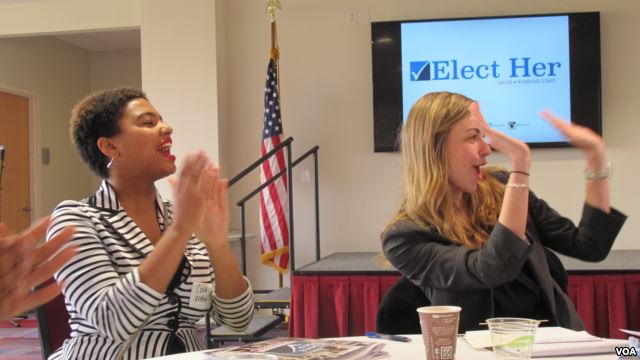Expanding the Political Pipeline for Women Candidates

Women make up slightly over half of the U.S. electorate, but their representation in prominent public office falls far short of that.
Females hold just over 19 percent of congressional seats (104 out of 535; 20 out of 100 in the Senate, 84 out of 435 in the House). They account for six out of 50 state governors and less than a quarter of all state legislators.
Numerical imbalance isn’t the only issue. "We know from research that governments … that are more gender balanced tend to get more done. They tend to have less corruption" and more collaboration, lawyer Mollie Lam tells dozens of students and educators – almost all women – gathered at South Carolina’s College of Charleston one late-winter Saturday.
They’ve assembled for Elect Her, a daylong workshop on why and how to run for public office – starting with student government. A nonpartisan project of the American Association of University Women (AAUW) and Running Start organization, it’s among a number of efforts aimed at widening the political pipeline for female candidates.
Two common obstacles squeeze them out, says Lam, the workshop’s facilitator and the AAUW Legal Advocacy Fund’s senior manager:
• Imposter syndrome. While men tend to overestimate their qualifications, women often underestimate theirs. Jennifer L. Lawless, who directs American University’s Women & Politics Institute, tells VOA that in national surveys asking respondents whether they’re qualified to seek public office, "about 60 percent of men but only 40 percent of women say yes, even though they have the exact same resume." While some men who doubt their own qualifications still run, "women who self-assess as unqualified stop at that point."
• A perceived or real difference in female candidates’ treatment. Women candidates experience widespread bias, Lam says, noting they’re scrutinized for appearance and often asked about family responsibilities. A 2014 Girl Scouts report (PDF) found that by the time they’re in middle school, "girls have determined they’re not fit to run," she adds.
Политика конфиденциальности | Правила пользования сайтом








